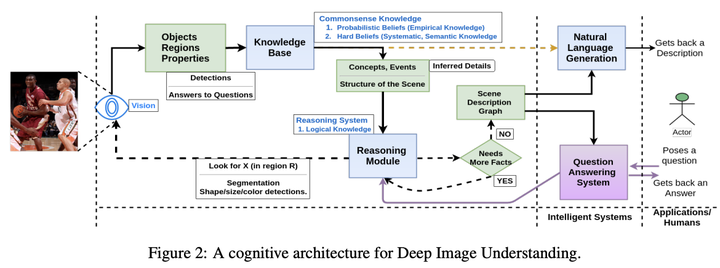

Image Understanding is fundamental to systems that need to extract contents and infer concepts from images. In this paper, we develop an architecture for understanding images, through which a system can recognize the content and the underlying concepts of an image and, reason and answer questions about both using a visual module, a reasoning module, and a commonsense knowledge base. In this architecture, visual data combines with background knowledge and; iterates through visual and reasoning modules to answer questions about an image or to generate a textual description of an image. We first provide motivations of such a Deep Image Understanding architecture and then, we describe the necessary components it should include. We also introduce our own preliminary implementation of this architecture and empirically show how this more generic implementation compares with a recent end-to-end Neural approach on specific applications. We address the knowledge-representation challenge in such an architecture by representing an image using a directed labeled graph (called Scene Description Graph). Our implementation uses generic visual recognition techniques and commonsense reasoning to extract such graphs from images. Our experiments show that the extracted graphs capture the syntactic and semantic content of an image with reasonable accuracy.